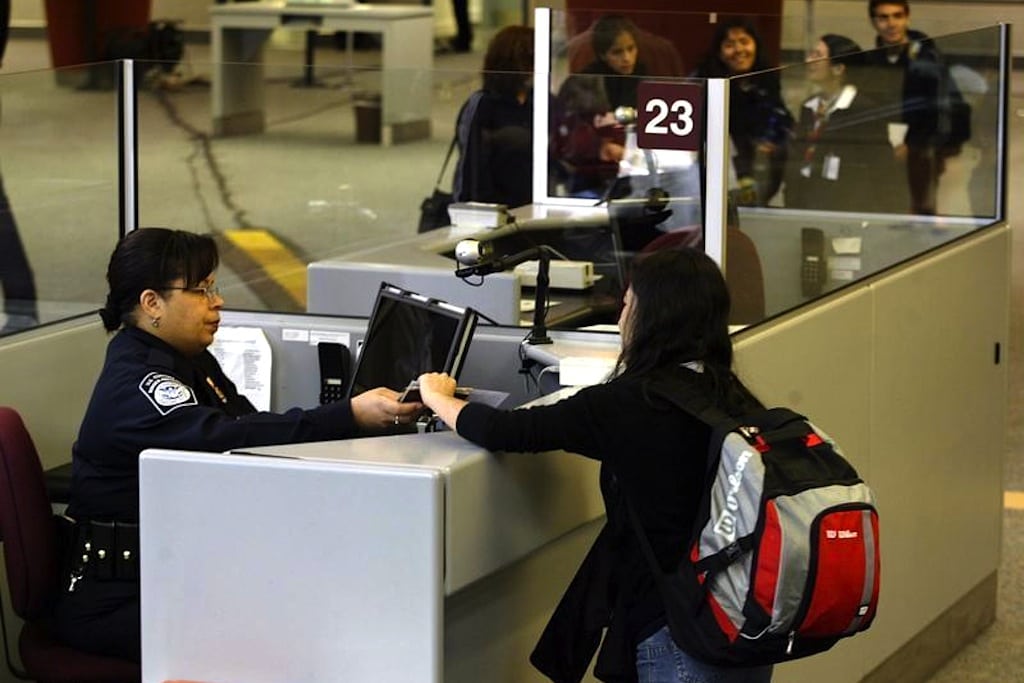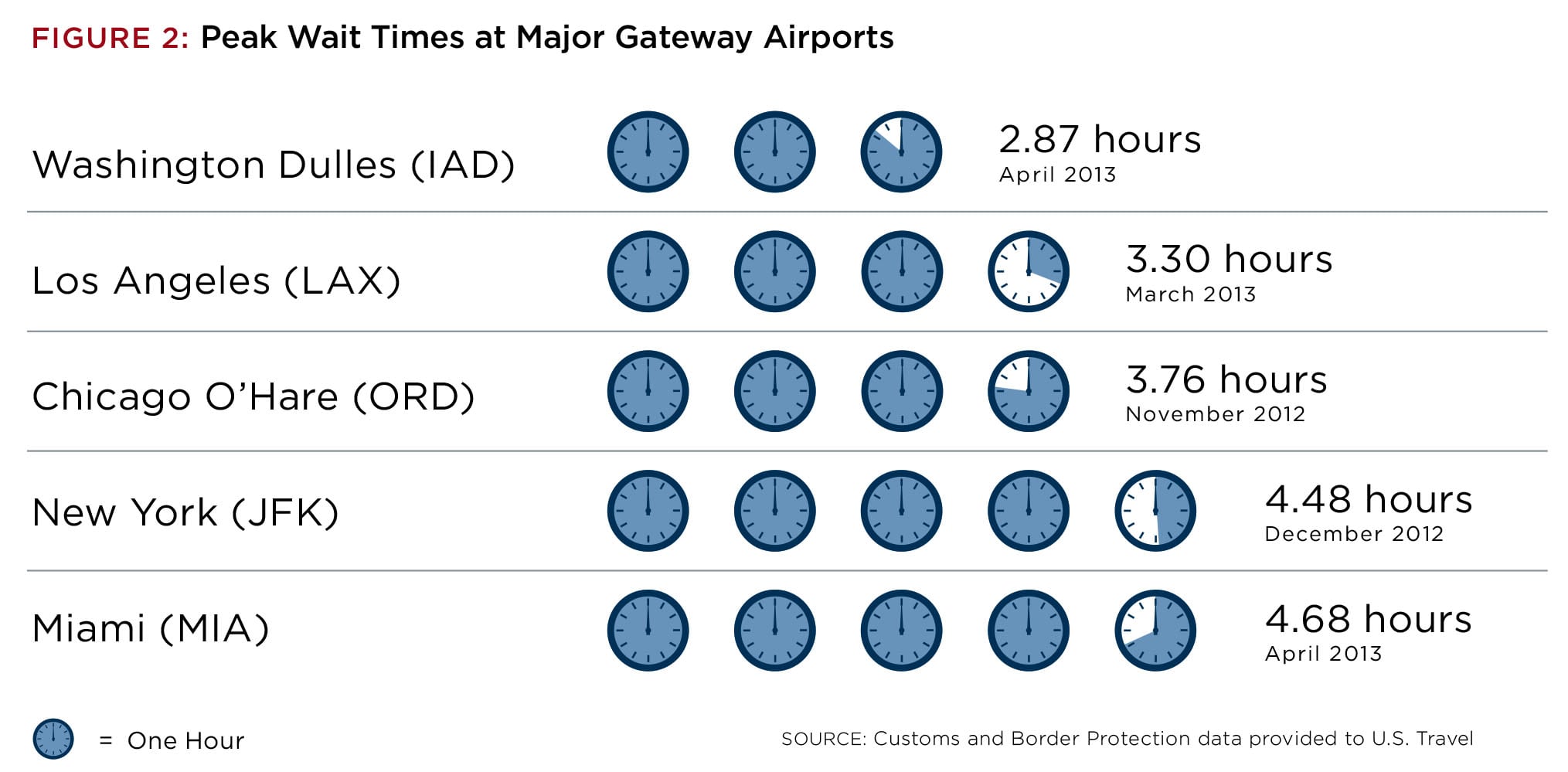Skift Take
President Obama has enacted reforms that have cut visa wait times abroad and increased destination marketing. Policies to create a faster, more seamless entry would be the logical next step, as would releasing more money to pay customs and border control staff.
The U.S. economy is at risk of losing $95 billion and 518,000 jobs over the next five years due to lengthy wait times and long custom lines at airports, the U.S. Travel Association said in an industry call to arms yesterday morning.
The industry group is battling budget restrictions and poor planning that it believes leave airports unable to handle millions of visitor a year. Sixty-six million visitors passed through U.S. border in 2012.
Visitors spend two to three hours in entry lines, which costs U.S. travel-related businesses up to $416 million a year, according to the association’s report Gateway to Jobs & Growth: Creating a Better Travel Entry Process published yesterday.
The association, made up of with over 1,3000 member from travel service providers, destinations, and travel associations, doesn’t just complain about the economic consequences of lengthy wait time and frustrating entries.
It proposes 20 policy changes (see below) that could address the problem, all of which aim to shorten the basic entry wait time to 30 minutes for international visitors. The report projects this change will result in a surge in visitors that generates $3.5 billion a year.
In an open letter to Congress, more than 70 U.S. travel executives from city tourism boards, hotel and resort groups, rental car companies, global distribution systems, online booking sites, airports, and the restaurant association urge lawmakers to heed the report’s recommendations and enact legislative reforms.
The 20 policy changes recommended by the U.S. Travel Association are as follows:
- Reduce peak wait times by 50 percent and process each traveler within 30 minutes.
- Address CBP office shortage by hiring at least 3,500 new CBP officers.
- Enhance CBP staffing flexibility to encourage creative solutions. One idea is hiring part-time employees to perform administrative duties.
- Implement automated passport control, which allows travelers to complete part of the immigration and customs process before speaking to a CBP office.
- Advance new technologies that more effectively process inbound international passengers while strengthening security.
- Develop and implement international best practices and look to other countries’ technological solution to enhance automation in the entry process.
- Expand the Global Entry Program.
- Allow CBP to accept reimbursements from third parties for the costs of conducting enrollment in Global Entry.
- Require Department of State and Homeland Security to coordinate visa and Global Entry application processes for eligible foreign travelers.
- Enable Global Entry enrollment during passport renewal.
- Improve airport coordination. CBP coordinate staffing with airport and airlines to limit wait times. Staffing should be based on airports’ and travelers’ needs rather than work rules or the demands of administrative work.
- Partner with the private sector. CBP should continue to work with the private sector to develop advanced queue management technique. It should also have the authority to accept in-kind contributions like welcome videos or interpreters that improve customer service.
- CBP should publicly post wait-time data for passengers and the private sector.
- Congress should require CBP to submit an annual progress report.
- All fees generated through the Electronic System for Travel Authorization and Brand USA should be used to relieve the financial pressure on CBP.
- Rationalize fee collection. CBP should consolidate existing immigration, customs, and agriculture fees into one fee. This reform would recede CBP’s collection costs and allow a higher percentage of fees to be utilized for actual screening operations.
- Increase transparency by requiring CBP to issue a public report on its current fee collection progress, administrative costs associated with the process, and the current allocation of the funds between air, land, and sea ports of entry.
- Provide CBP with access to recently increased fees paid by North American visitors.
- Reinvest passenger fees paid by travelers, but not spent by CNP. The Government Accountability Office has discover that CBP is holding approximately $640 million in excess fee collections that could be spent without requiring a budgetary effort.
- Enhance DHS oversight of customer service and increase customer service transparency.
The White House sent a similar message in an August blog post outlining six reforms that would boost U.S. travel and tourism.
The open letter signed by more than 70 travel leaders is embedded below:
The full report, Gateway to Jobs & Growth: Creating a Better Travel Entry Process, is embedded below:
The Daily Newsletter
Our daily coverage of the global travel industry. Written by editors and analysts from across Skift’s brands.
Have a confidential tip for Skift? Get in touch
Tags: customs, immigration, politics, usa
Photo credit: A foreign airline passenger is greeted by a Customs and Border Protection Officer at Hartsfield-Jackson International Airport in Atlanta, Georgia January 5, 2004. Tami Chappell / Reuters

